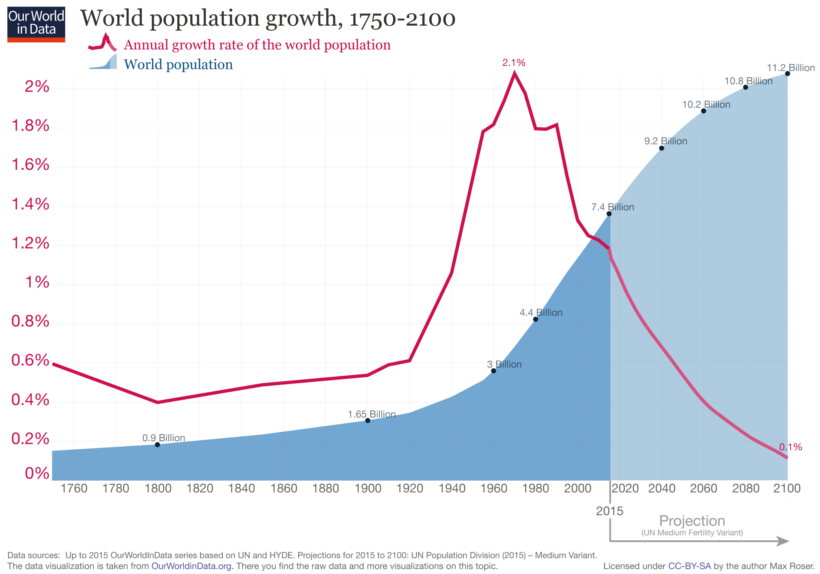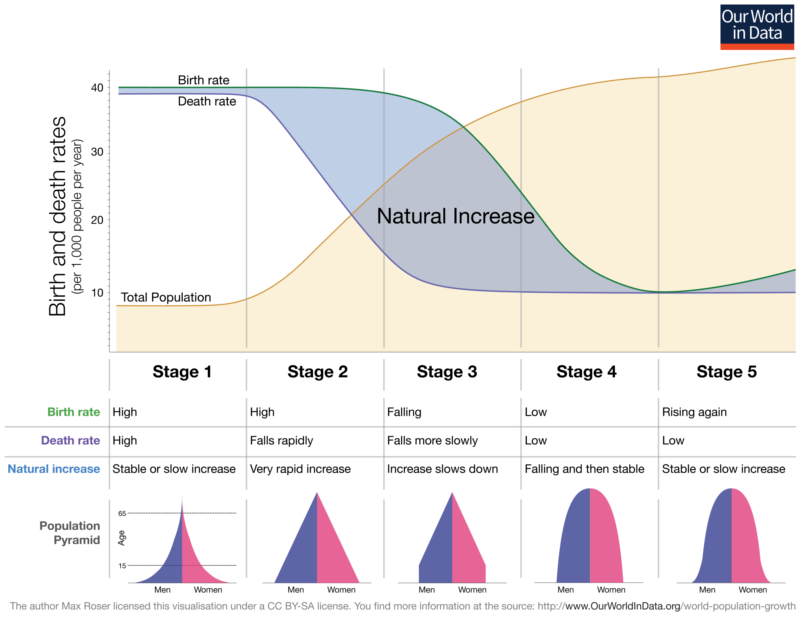By Jeff Desjardins*
Back in the 1960s, global population growth peaked at a 2.1% annual rate, but since then it has been on a historic downtrend.
In fact, according to the most commonly cited United Nations projection, which is based on a medium fertility rate scenario, it’s expected that annual population growth could drop all the way to 0.1% by the end of the 21st century.
Visualizing a Demographic Transition
Today’s powerful charts come from Our World in Data by economist Max Roser, and they show how global demographics will shift over the next 80 years.
Below you can see one major catalyst of this change, which is the peaking (and then falling) population growth rate:

Why has population growth been dropping since the 1960s?
A variety of explanations factor into this, including:
Falling fertility rates: Birth rates tend to fall as nations get richer. First, this happened in the developed world, but as the century progresses this phenomenon will impact more and more developing nations.
Government policy: China’s “One Child Policy” in particular had an effect on global population growth, and the aftermath of the policy is still contributing to a shrinking Chinese populationover the long term.
Rural flight: Urban dwellers tend to have fewer babies – and by 2050, there will be an additional 2.5 billion peopleliving in cities globally.
Fewer births combined with improving healthcare – especially in developing nations – will dramatically alter the composition of the world population pyramid, creating both economic opportunities and challenges in the process.
The Changing World Population Pyramid
The following graphic charts how these changes affect the makeup of the world’s population.

Over time, the shape of the world population pyramid is expected to shift from Stage 1 (high birth rates, high death rates) to something closer to Stage 4 (low birth rates, low death rates).
As the population distribution skews older, here is how population size and global median age will change:

Global median age is projected to surpass 40 years by the end of the century, and it will be considerably higher in many Western nations, especially in Japan and Europe.
With the future demographic composition looking very different than today, it will be fascinating to see how the economy responds to these potential tailwinds. Further, it will be even more interesting to see what role automation will play as the old-age dependency ratio hits historic highs.
* Founder and editor, Visual Capitalist
** First published in weforum.org




 By: N. Peter Kramer
By: N. Peter Kramer
